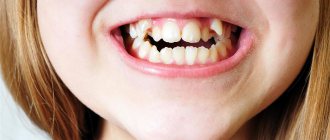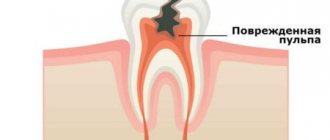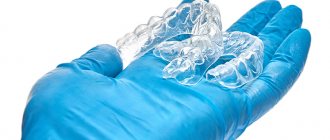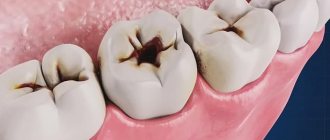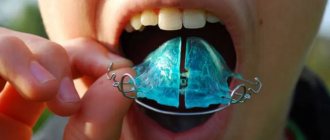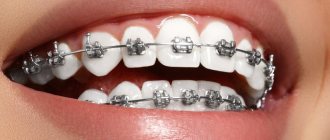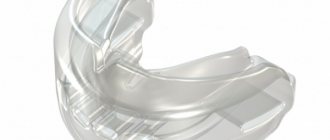Previously, it was possible to correct the bite only with the help of braces. But a few years ago, an alternative to fixed structures appeared in the form of aligners - invisible orthodontic caps. Both systems solve the same problems. What to ultimately choose for treatment, aligners or braces, is a question that interests many.
To straighten your teeth and eliminate other pathologies, contact the PROPRICUS clinic. Our doctors use advanced treatment techniques and work with modern equipment. Braces and aligners are installed. Together with the client, they decide which instrument to correct the bite. Make an appointment at the dentist. We will select an effective correction method and make your teeth healthy.
What are aligners
Aligners for straightening teeth are removable corrective systems that involve consistent micro-movement of teeth into the correct position. Before starting treatment, the patient undergoes a comprehensive diagnosis necessary to create an accurate treatment program. The doctor then takes digital impressions of the teeth and sends them to a laboratory to create corrective aligners. They are made taking into account the natural biomechanics of teeth and jaw movement. The patient receives a set of 10-40 aligners (depending on the clinical picture). The aligners in the set differ in the shape and size of the dental arch. The patient alternates designs until the desired result is achieved.
Elastic, transparent orthodontic aligners made of thin thermoplastic material fit tightly to the teeth, making orthodontic treatment as comfortable as possible for the patient and invisible to others. Even sapphire braces are inferior to aligning aligners in terms of invisibility, aesthetics and wearing comfort.
Aligners are manufactured in more than a dozen laboratories around the world, which gives the patient the opportunity to choose an aligner system at the most attractive price. Teeth straightening at the Ilatan clinic in Moscow is carried out using corrective systems from reliable manufacturers. The use of digital technologies allows you to see your future smile even before correction begins.
What types of diastema exist and why do they occur?
Diastemas, as well as tremata, come in different types. Experts divide them by etiology, location, and type of displacement. Doctors also distinguish between false and true diastemas separately. The latter are always a consequence of pathology, while false ones are found only in children and disappear as the teeth grow.
Symmetrical and asymmetrical diastema
Most often, the diastema is symmetrical, that is, the incisors are equidistant from the frenulum. An asymmetrical arrangement is much less common, and with it, only one incisor is displaced, the second is in the correct position.
Lateral deviation of crowns
With lateral deviation of the crowns, the roots are located correctly, the discrepancy begins only on the visible part of the teeth. Most often, this pathology is a consequence of supernumerary teeth. Also, a gap may appear due to bad habits.
Body lateral displacement
The peculiarity of this type of displacement is the complete deviation of the teeth along with the roots. It is provoked by congenital adentia, the lower attachment of the frenulum, and compaction of the middle suture on the bone tissue. In the latter case, the teeth cannot overcome the obstacle and take the correct position.
Medial inclination of central incisors
This type of diastema is the most difficult, since it simultaneously causes deviation of the teeth from the center and their rotation along the axis. The cause is almost always supernumerary teeth located between the first incisors or odontoma, a benign tumor growing in the jaw bone.
Pros and cons of aligners
| Advantages | Flaws |
| High aesthetics – a transparent mouthguard is invisible on the teeth, so wearing it is not accompanied by psychological discomfort. | Aligners may not solve complex orthodontic problems |
| Easy to care for – the ability to independently remove the structure and carry out hygiene procedures. | The technology is only suitable for a fully formed dental system |
| Hypoallergenic – the systems are made from a new generation biopolymer thermoplastic material that does not cause allergies. | You need to wear aligners at least 22-23 hours a day |
| Lightness and invisibility – invisible to others, do not affect diction. | There are contraindications |
| Wearing comfort – the design does not contain metal elements that can injure the soft tissues of the oral cavity. | The cost of treatment is higher than correction with braces |
| Efficiency – successfully cope with almost any malocclusion. | |
| Predicting the result – digitally created orthodontic aligners fit precisely, making treatment predictable. |
Do you want to correct your bite? We are waiting for you for a free consultation!
- The leading expert of the clinic, Nana Gezalova, is doctor No. 1 in the Invisalign rating. This is a talented orthodontist with 15 years of experience and extensive experience working with Invisalign aligners. She personally trains the clinic’s orthodontists and strictly controls the quality of treatment for each patient.
- We never change the cost of treatment after signing the contract. The price of treatment does not increase, even if the dollar exchange rate has changed.
- The clinic’s specialists continuously improve their knowledge and skills, participate in international conferences, and communicate with foreign colleagues.
- We use advanced equipment and regularly update our technical fleet.
- We don’t just straighten teeth, but work comprehensively to ensure healthy jaw joints, correct bite and high aesthetics.
Indications and contraindications for installation
Orthodontic aligners can cope even with complex bite defects. Systems are also indicated if you need to move individual teeth in a row, secure or improve the results of wearing braces. Main indications for treatment with aligners:
- trema, diastema;
- crowded teeth;
- distal bite
(the lower jaw occupies a posterior position in relation to the upper jaw); - cross bite
– in which the lower jaw overlaps the upper jaw, and not vice versa; - open bite
– the lateral or front teeth do not close together; - protruding teeth
– one of the dental arches is pushed forward; - direct bite
- the maxillary and mandibular dentitions are closed by the cutting edges of the incisors; - predator fangs
- the fangs overlap the upper incisors; - mesial bite
– the lower jaw protrudes forward.
Teeth straightening begins immediately from the moment the mouthguard is applied, and the first result is noticeable within a month. Corrective mouth guards are used to correct the bite in adults and adolescents when baby teeth have been completely replaced with permanent teeth and the dentofacial system has fully formed.
Aligners are not used to straighten teeth if:
- periodontal diseases, due to an increased risk of losing teeth;
- complex complex defects in jaw development;
- lack of teeth in large numbers (more than 4);
- impacted teeth.
Corrective aligners have fewer contraindications than braces. Thin, weakened enamel does not become an obstacle to corrective treatment with aligners. The doctor will conduct remineralization therapy and then begin to correct the bite. In complex clinical cases, if it is impossible to fully correct the bite without a brace system, it is possible to combine treatment with aligners with the use of braces.
Comments
Is it possible to drink drinks in mouth guards?
Julia (02/29/2020 at 08:35 pm) Reply to comment
- Dear Yulia! You can only drink plain water. If you are going to drink coffee, tea, juices and other drinks, you must first remove the aligners.
Editorial staff of the portal UltraSmile.ru (03/04/2020 at 08:17) Reply to comment
If I forget to put on my mouth guards a couple of times, what will happen?
question (03/10/2020 at 10:55 pm) Reply to comment
- Aligners require a high level of self-control from the patient, because otherwise the treatment will move much slower than originally planned.
Editorial staff of the portal UltraSmile.ru (03/16/2020 at 09:04) Reply to comment
If the bite is incorrect and quite severe, is there a chance to correct it at 30 years old?
Oleg (03/20/2020 at 12:08 pm) Reply to comment
My daughter has very uneven teeth and this causes an incorrect bite. They wanted to get braces, but she is shy, she is still a teenage girl. And the mouthguards look somehow more aesthetically pleasing, but I am afraid that the desired result will not be achieved. How long will it take if you wear mouth guards instead of braces?
Olga Kapustina (03/20/2020 at 12:13 pm) Reply to comment
Is it still more effective to put on braces than mouth guards?? Are there any contraindications for mouth guards, maybe there have been cases of allergies?? And won't they cause discomfort when worn??
Irina (03/20/2020 at 12:27 pm) Reply to comment
It looks more convenient and practical than wearing braces, but the price is more expensive. Is it necessary to change them so often, or when purchasing them are they calculated for a full course of teeth straightening? And how easy are they to take off and put on? Doesn’t this cause discomfort?
Dmitry Ch. (03.20.2020 at 12:55) Reply to comment
As I understand it, domestic manufacturers make mouthguards of equal quality to foreign ones? Of course it’s not cheap, but in my opinion, the beauty of the teeth is one of the first things that catches your eye! The opinion of a specialist is important.
Maria (03/20/2020 at 14:18) Reply to comment
Hello! I have a few questions: What are these wonderful products made of? How much do beautiful products cost? Are they safe for health? Where can I buy them?
Margarita (03/20/2020 at 14:24) Reply to comment
Please tell me, is the Russian brand Star Smile not inferior in quality to other well-known foreign brands? I see the cost is almost the same, but the wait is less.
Irina (03/20/2020 at 15:49) Reply to comment
How much time do you estimate the difference between alignment with braces and aligners? And how much more expensive is the second than the first? Are there any contraindications or additional inconveniences?
Alexey (04/23/2020 at 08:28) Reply to comment
Please tell me, will there be any results from wearing mouth guards at the age of 37-38 and will this result last for a long time? Or will some kind of correction be needed over time and will I need to wear mouth guards again?
Daria (04/23/2020 at 10:11 am) Reply to comment
Please share your experience of using mouth guards from well-known brands described in the article? What is the best choice? Are there any nuances regarding installation, wearing, quality of material?
Vitaly (04/23/2020 at 10:16 am) Reply to comment
At what age are corrections possible and effective with the help of mouthguards, because with age, all tissues in a person lose their elasticity. Is it worth doing such an upgrade after fifty years?
Vyacheslav (04/23/2020 at 11:16 am) Reply to comment
Write your comment Cancel reply
What is better - veneers, braces or aligners?
Since veneers are not able to correct bite defects, it is incorrect to compare them with braces or aligners. Thanks to veneering, you can get a flawless smile, correct the shape and size of teeth, hide interdental spaces, enamel defects, and eliminate slight curvature of teeth. The mechanism of operation of braces and aligners when straightening teeth is completely different - the orthopedic system constantly puts pressure on the dentition, taking into account the natural micromobility of the dental units, gradually moving them to a given position.
The speed of treatment with aligners is 30% higher than with braces. There is absolutely no risk of damaging tooth enamel or injuring the mucous membrane when wearing corrective aligners, which cannot be excluded when treated with braces. Also, the advantages of aligners include the absence of allergies, quick installation and the ability to see your future smile before the correction begins. Braces systems cannot boast of this. In some cases, aligners are powerless, but braces are successful. Elastic aligners do not damage the enamel, provide high-quality dental care and are not visible when worn. Orthodontic aligners are inferior to braces due to narrower indications for clinical use and higher cost of treatment.
Star Smile
The Moscow production of this system is a good alternative to the previous American manufacturer. A characteristic feature of the company is fast production times. High quality elastic materials are used for creation.
Advantages of bite correction using Moscow aligners:
- As noted earlier - fast production times;
- Simple rules for care;
- Invisibility and aesthetic appearance;
- Quick habituation process.
Before choosing and installing such an aligner system, you need to consider the following disadvantages:
- It is possible to eliminate minor irregularities in the structure of teeth. The reason for this is slight pressure on the teeth.
- After manufacturing, frequent visits to the clinic’s orthodontic office are required for timely replacement of products (about 20 aligners need to be replaced during the period of eliminating crooked teeth).
The production and installation of aligners from this manufacturer will cost the patient approximately 200 thousand rubles. (average price in Moscow).
Manufacturing Features
When planning orthodontic treatment, digital technologies, specialized software and 3D modeling are used to create unique molds based on individual impressions from the patient’s teeth. To take accurate parameters, a digital intraoral scanner is used, the data from which is transferred to a computer. In the laboratory, 3D models are created according to individual parameters, according to which the required number of aligners is made. Numbered boxes with aligners are delivered to the dentist. The orthodontist explains to the patient how to properly install and remove aligners, and issues kits for 1-2 months of correction. Depending on the selected corrective system, production can take from several days to 2-3 weeks (if we are talking about foreign brands such as Invisalign, FlexiLigner, etc.)
Prevention of recurrence of diastema
Relapses in orthodontic treatment, unfortunately, occur frequently. This is especially frustrating considering how much time and money is involved in fixing the problem. In the case of diastema, its appearance can be caused by various reasons. The most common are incorrectly selected treatment and neglect of the orthodontist’s recommendations during the retention period.
Sometimes patients refuse the necessary surgical treatment or wearing braces, and insist on “simple” correction methods, for example, installing crowns or masking the gap with composite materials. But since the problem remains unresolved, the diastema will return.
Likewise, she will not keep you waiting if, after treatment, the patient decides to ignore the orthodontist’s recommendations and does not wear retention devices.
Stages of treatment
- Diagnostics
– detection of malocclusions, X-ray examinations (CT, TRG), taking digital impressions, photo protocol (for Invisalign systems). Transferring the results obtained to the laboratory, modeling the progress of treatment. - Preparation
– treatment of teeth, gums (according to indications), sanitation of the oral cavity (removal of stone, plaque), replacement of old defective fillings. - Installation
- the orthodontist will install the first aligners, explain how to insert and remove them, issue a treatment kit, and schedule the next visit. You need to visit a doctor for monitoring every 2-3 months. If problems arise, you should consult a doctor immediately. - Completion of treatment
- when the planned result is achieved, the correction of the dentition is considered complete. The doctor selects a retainer to prevent the teeth from moving back to their original position.
Until the desired result is achieved, the system is worn around the clock, every day, and removed only when eating and brushing your teeth. The aligners are replaced every 2-3 weeks, each new device gradually moves the teeth into the desired position. The duration of orthodontic treatment depends on the clinical picture and ranges from six months to two or more years.
How to prevent diastema in a child
If diastema is a common occurrence among relatives, the parents of a small child should inform the dentist about this when the child is 2-3 years old. The specialist will observe the dynamics and, if necessary, offer age-appropriate types of correction.
Among the general recommendations on how to prevent gaps between teeth in children, the main one is to ensure that the child does not develop bad habits, such as biting nails, pencils and pens, and sucking fingers.
